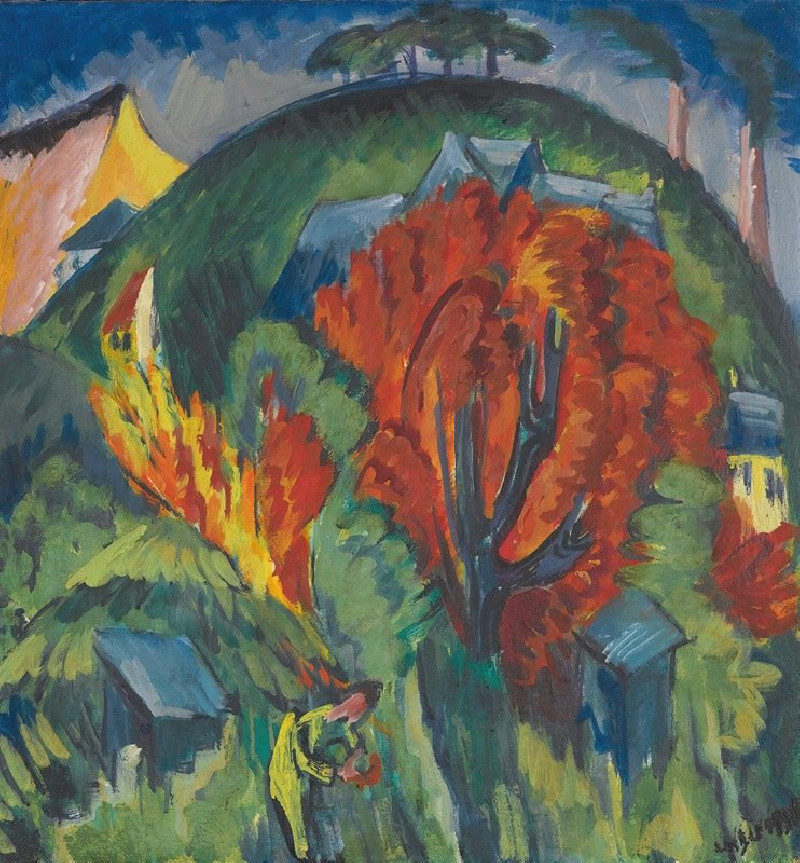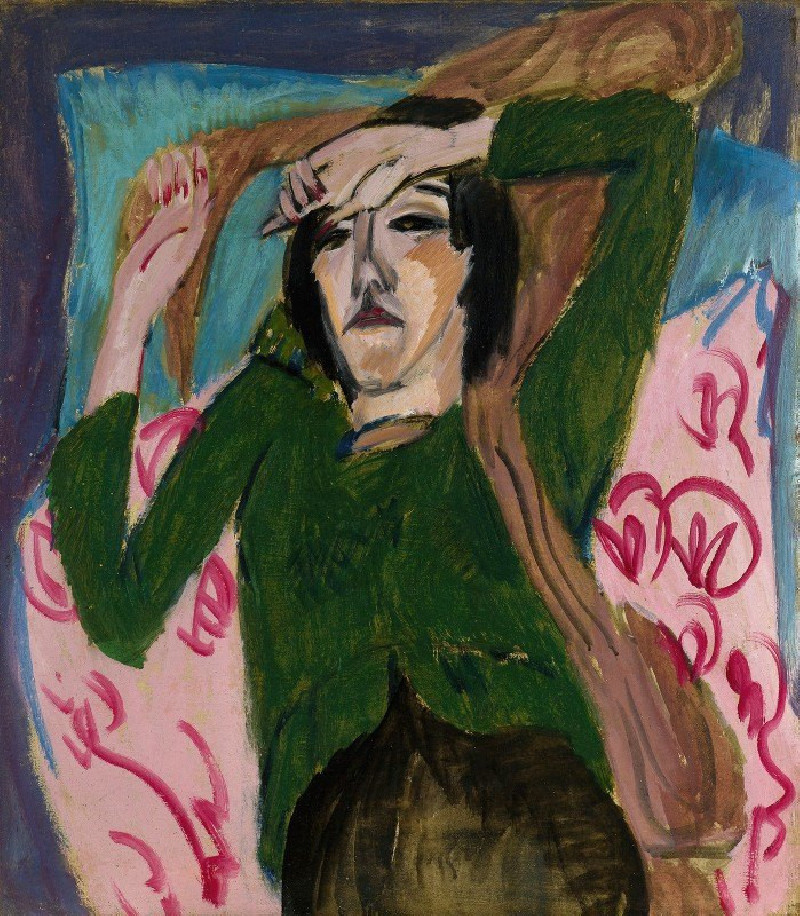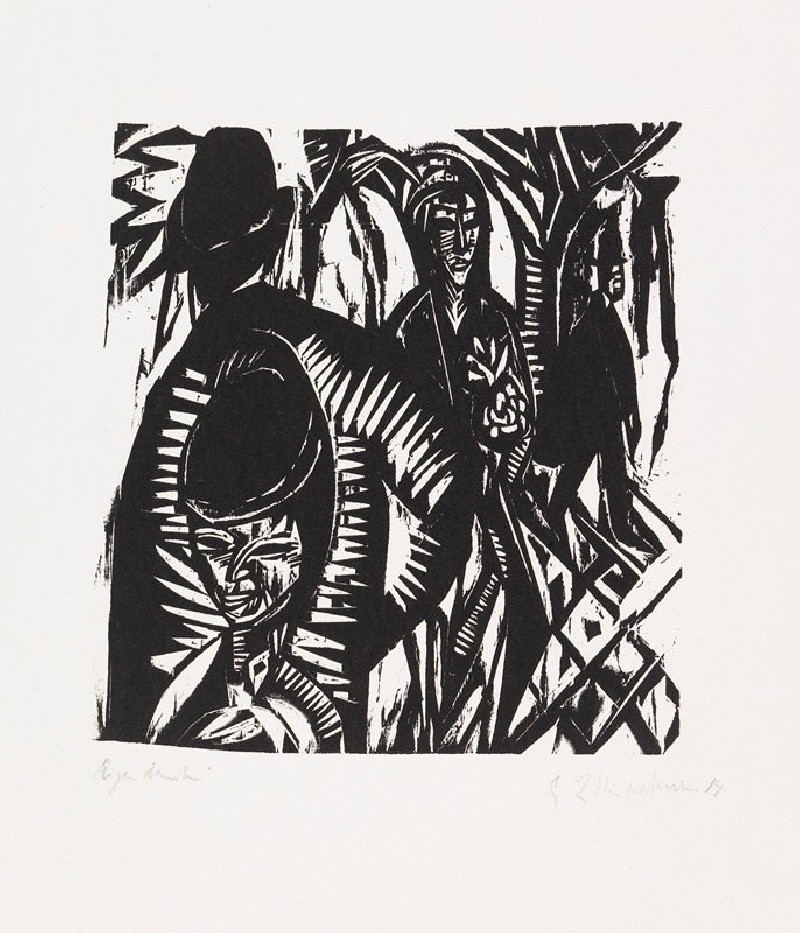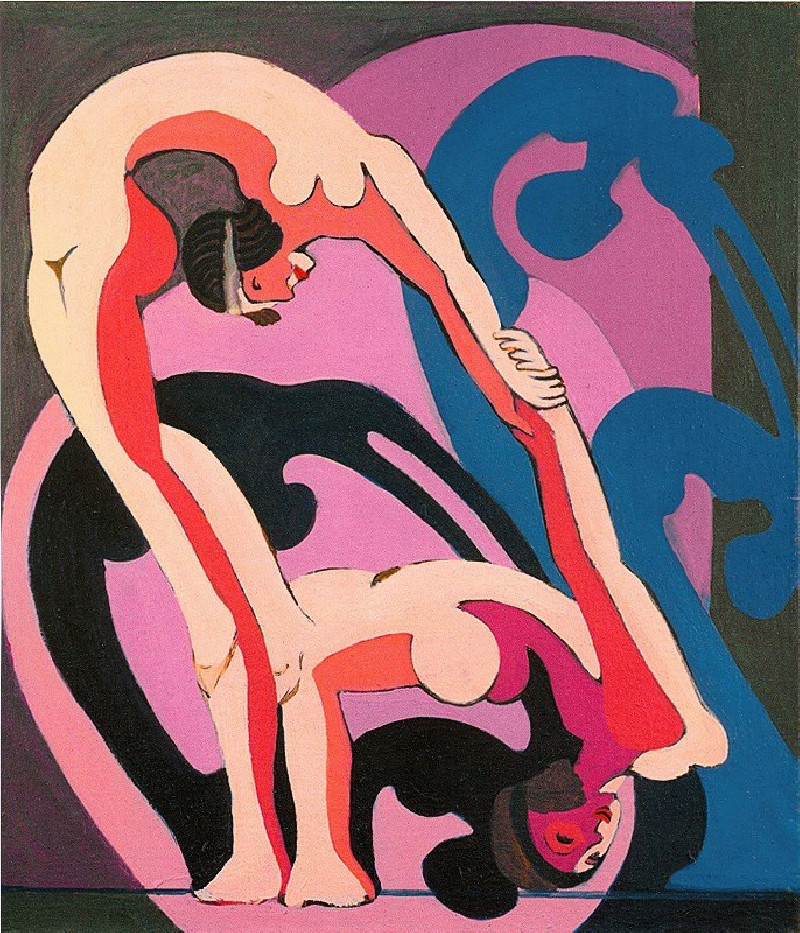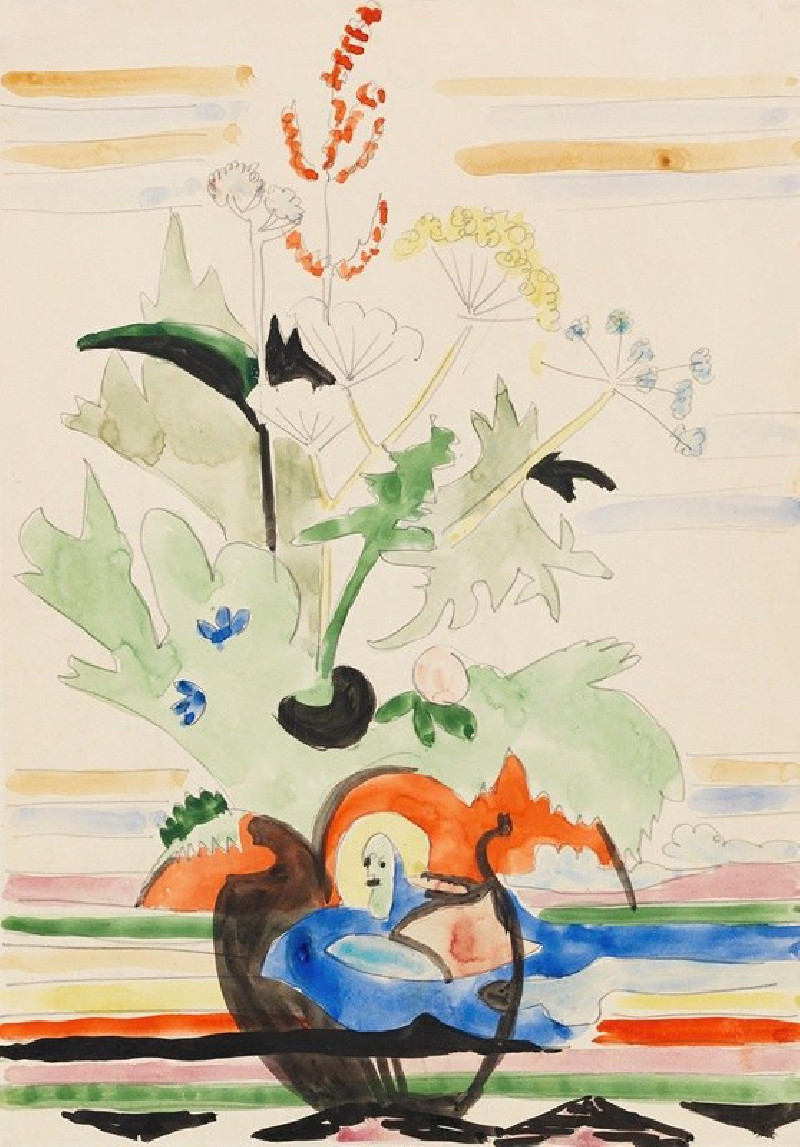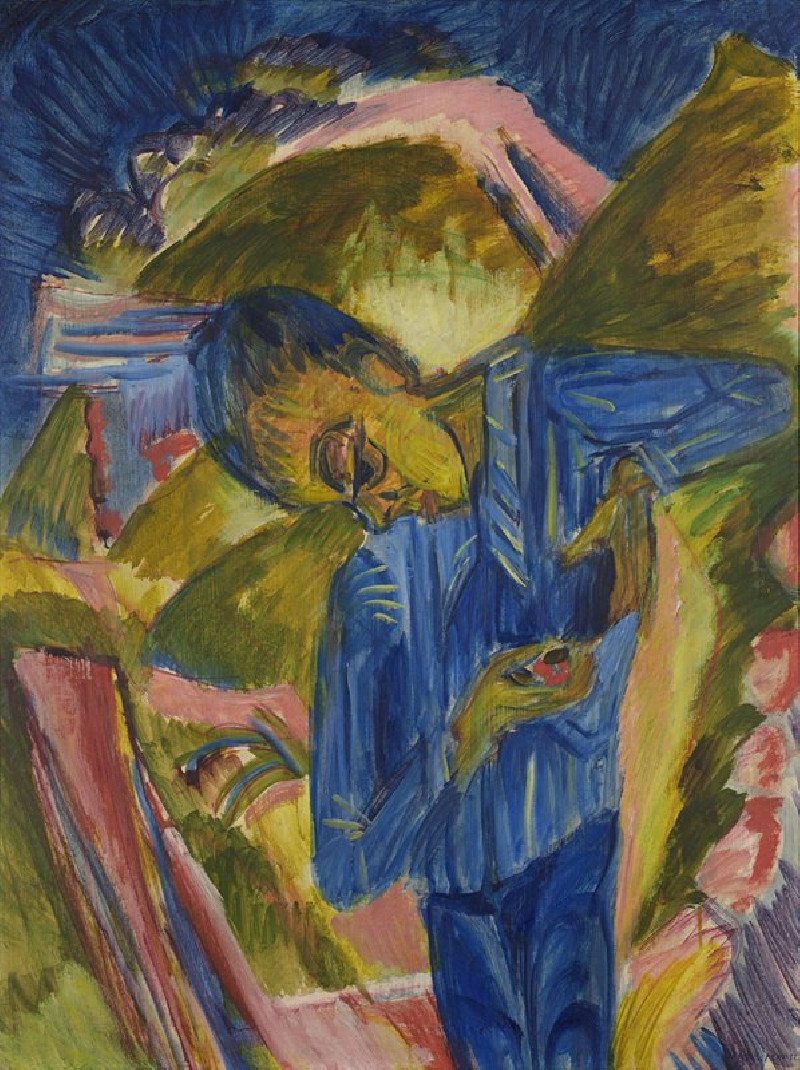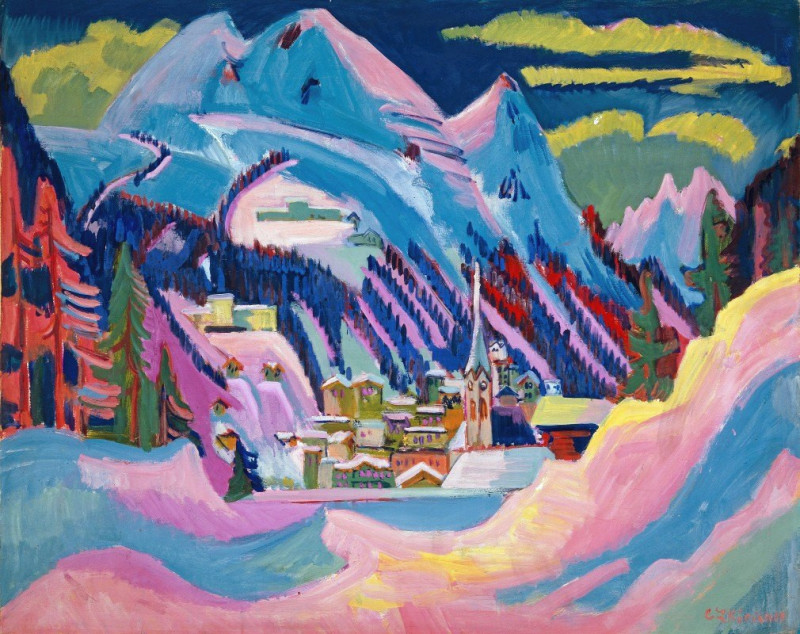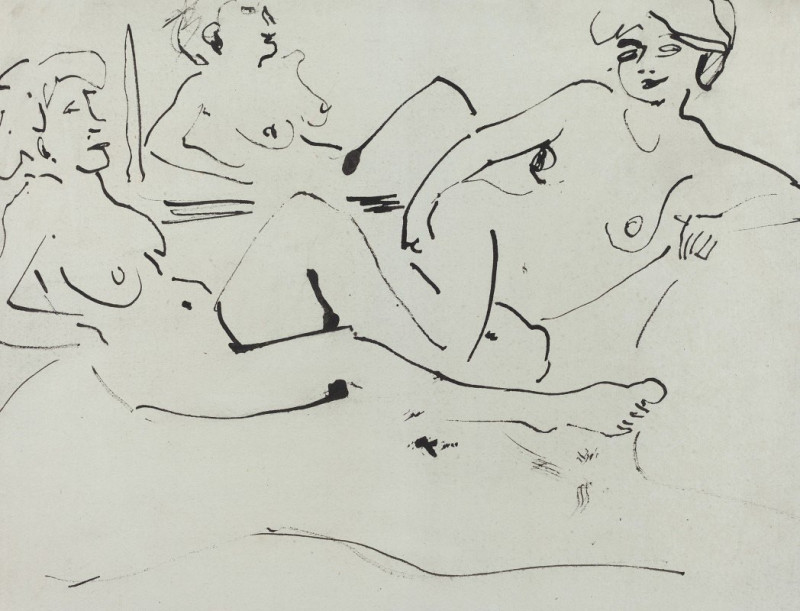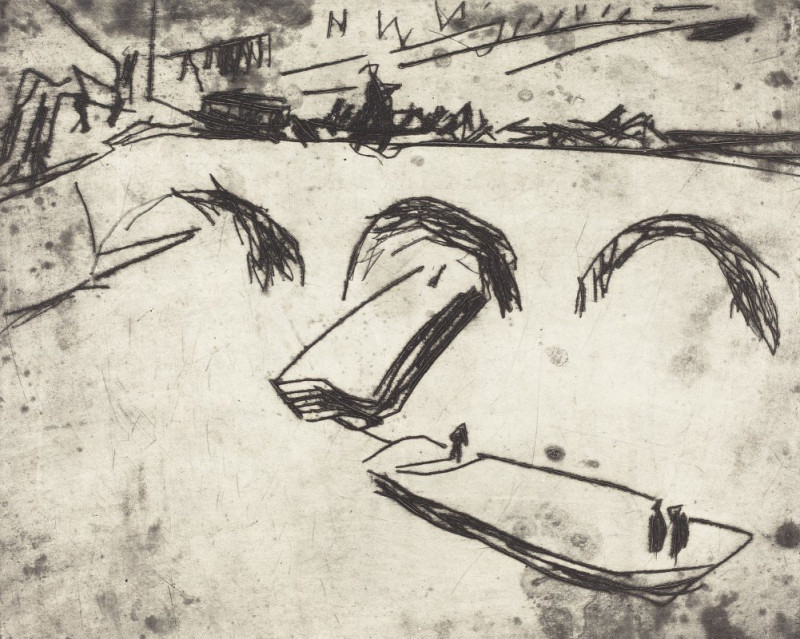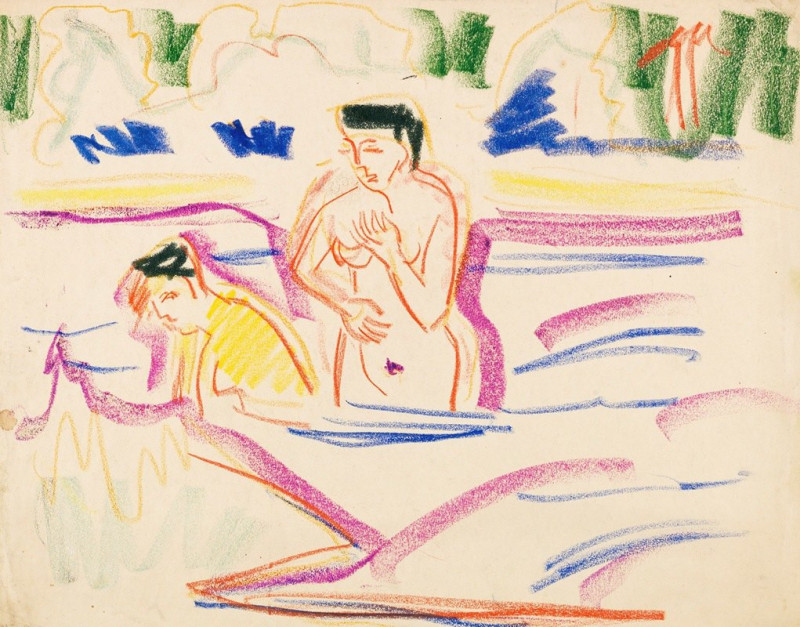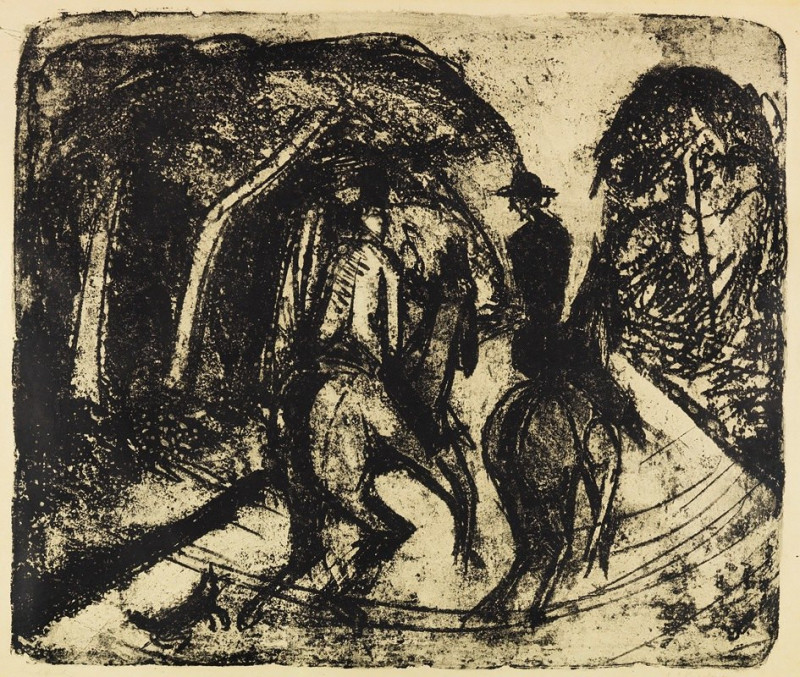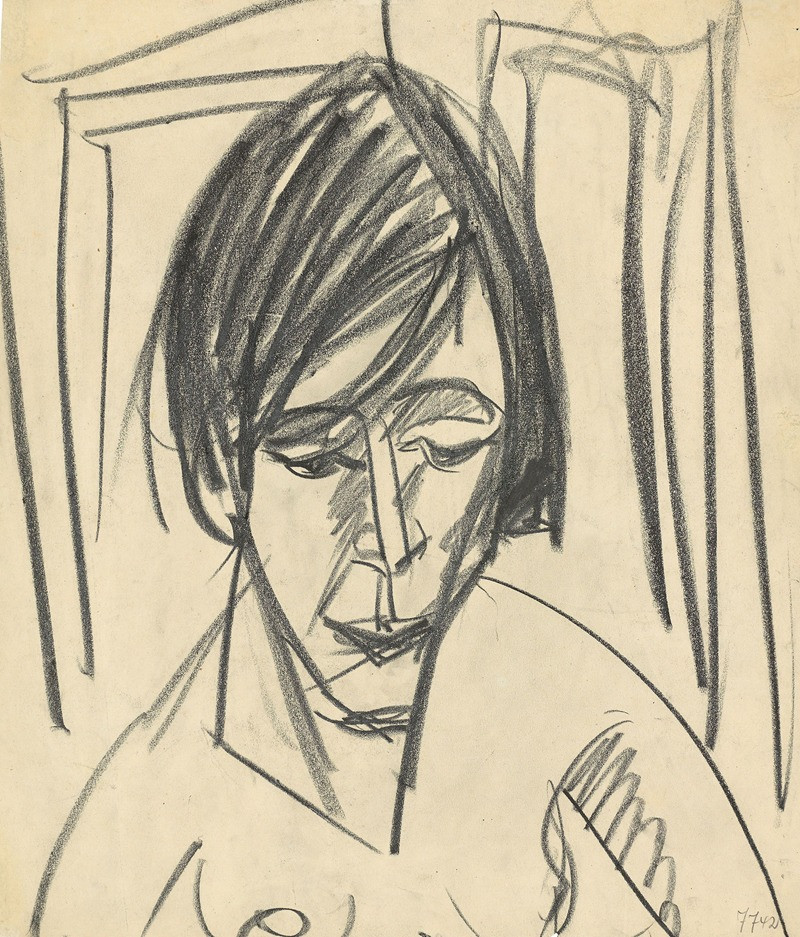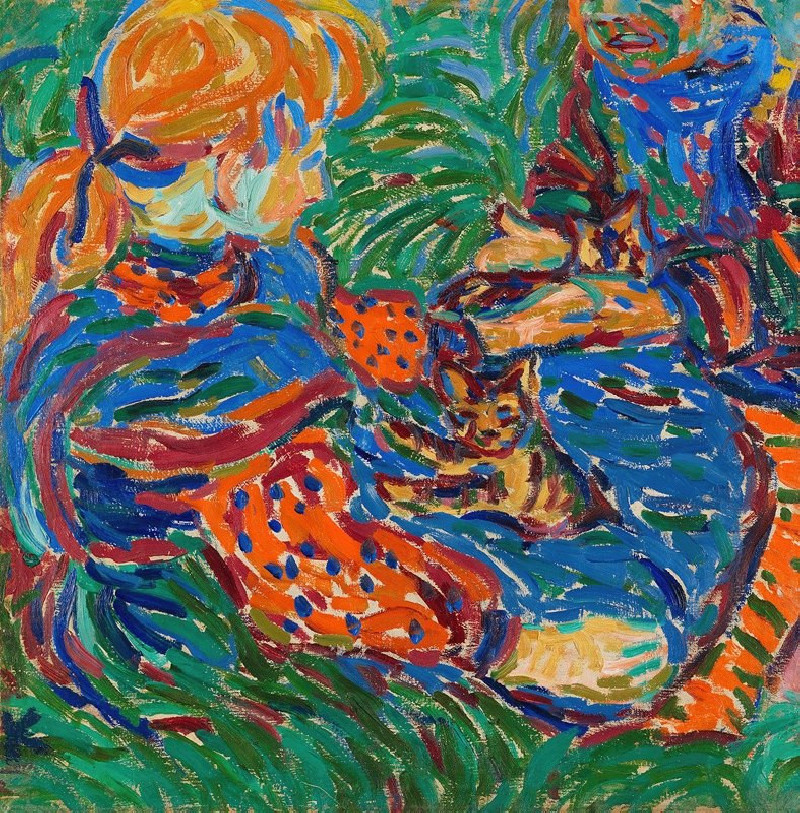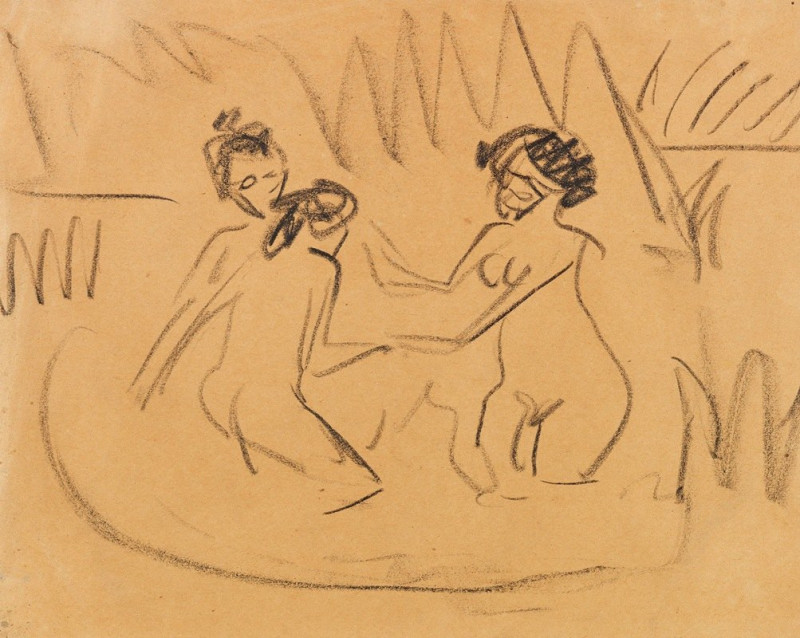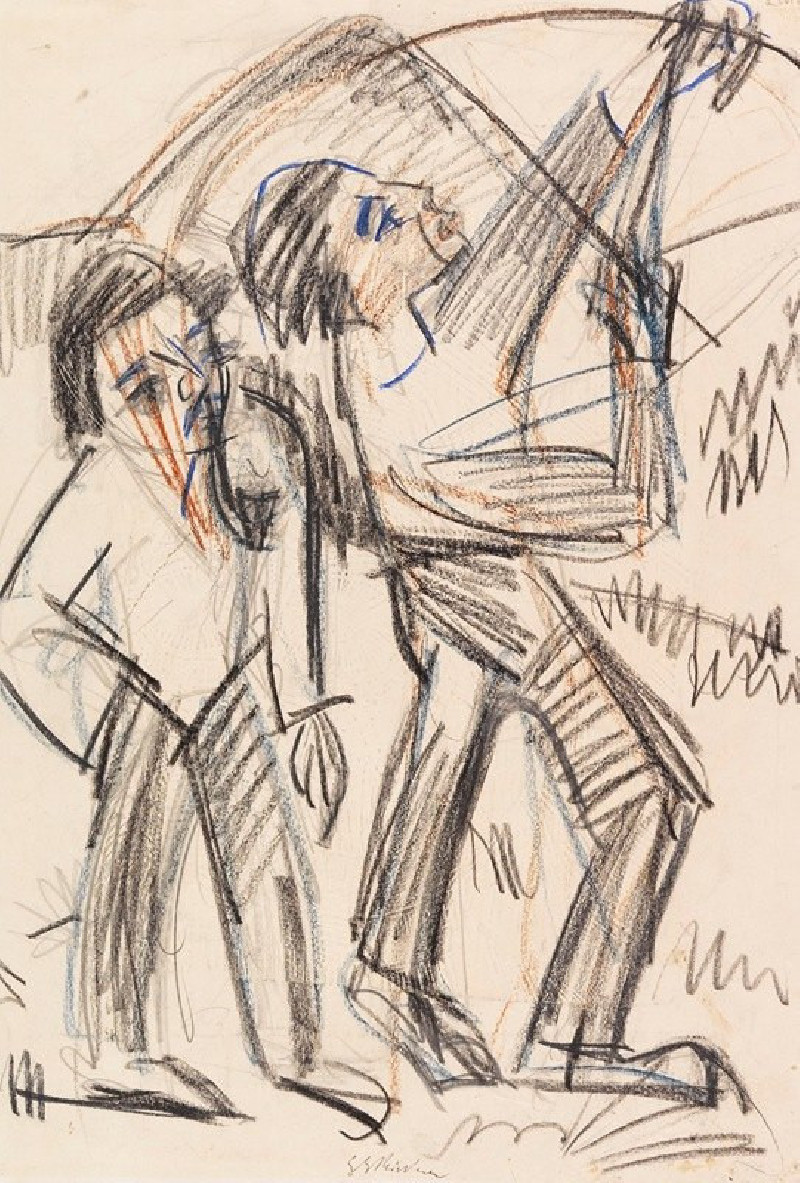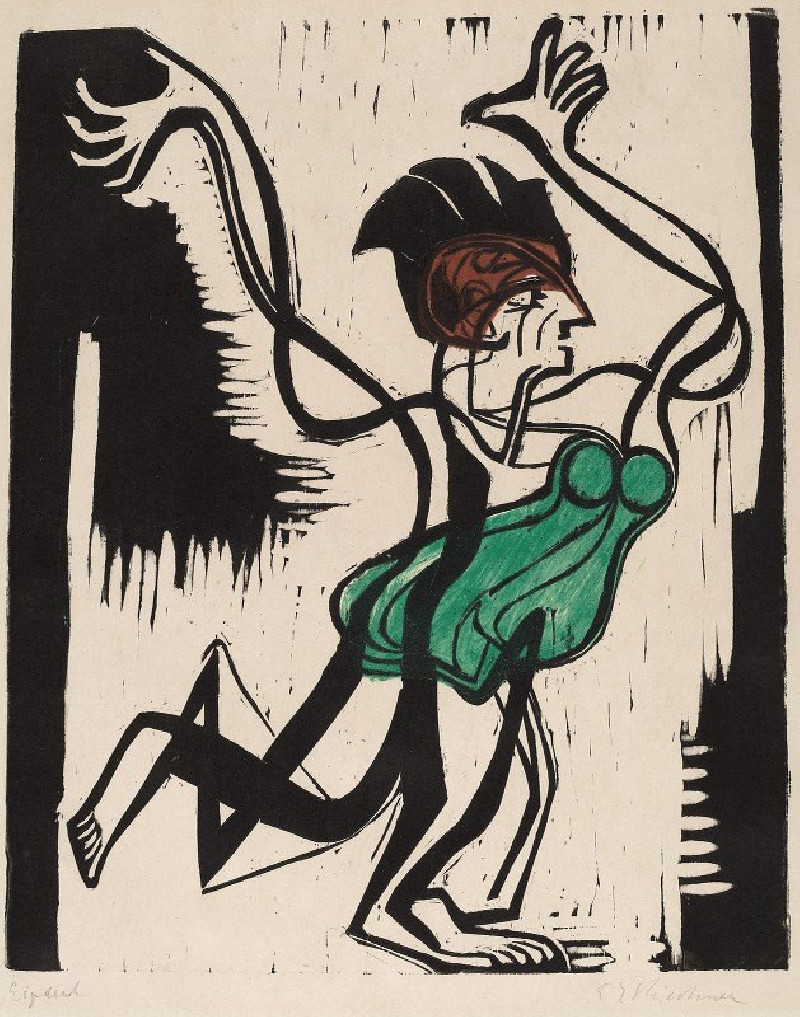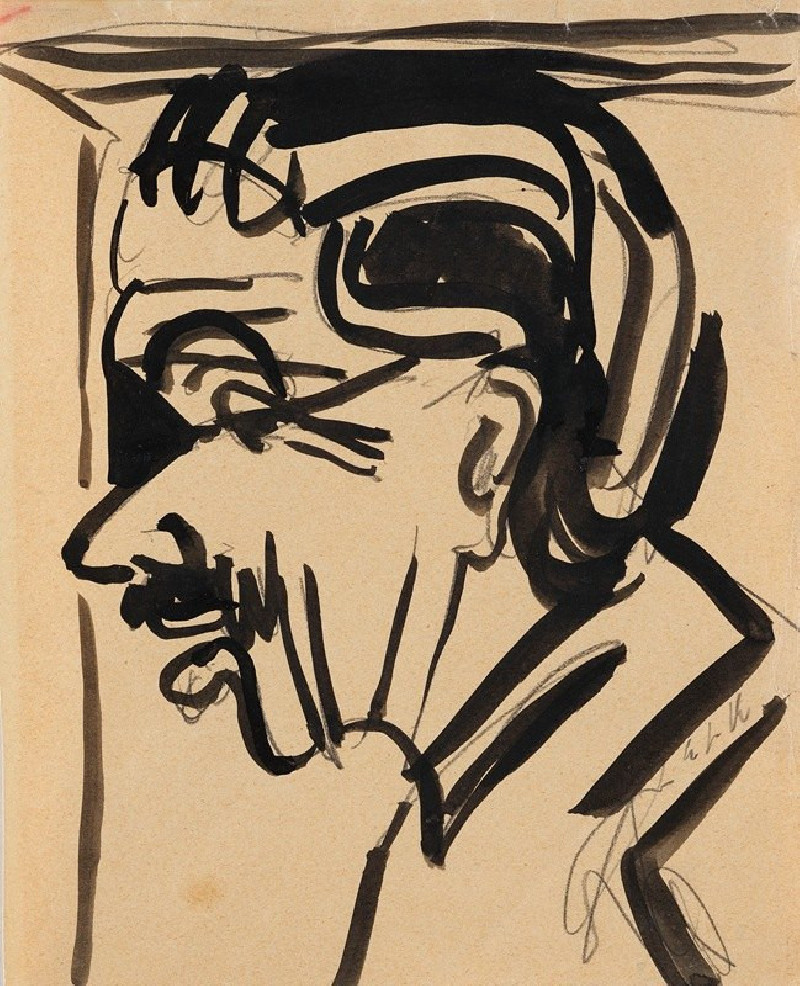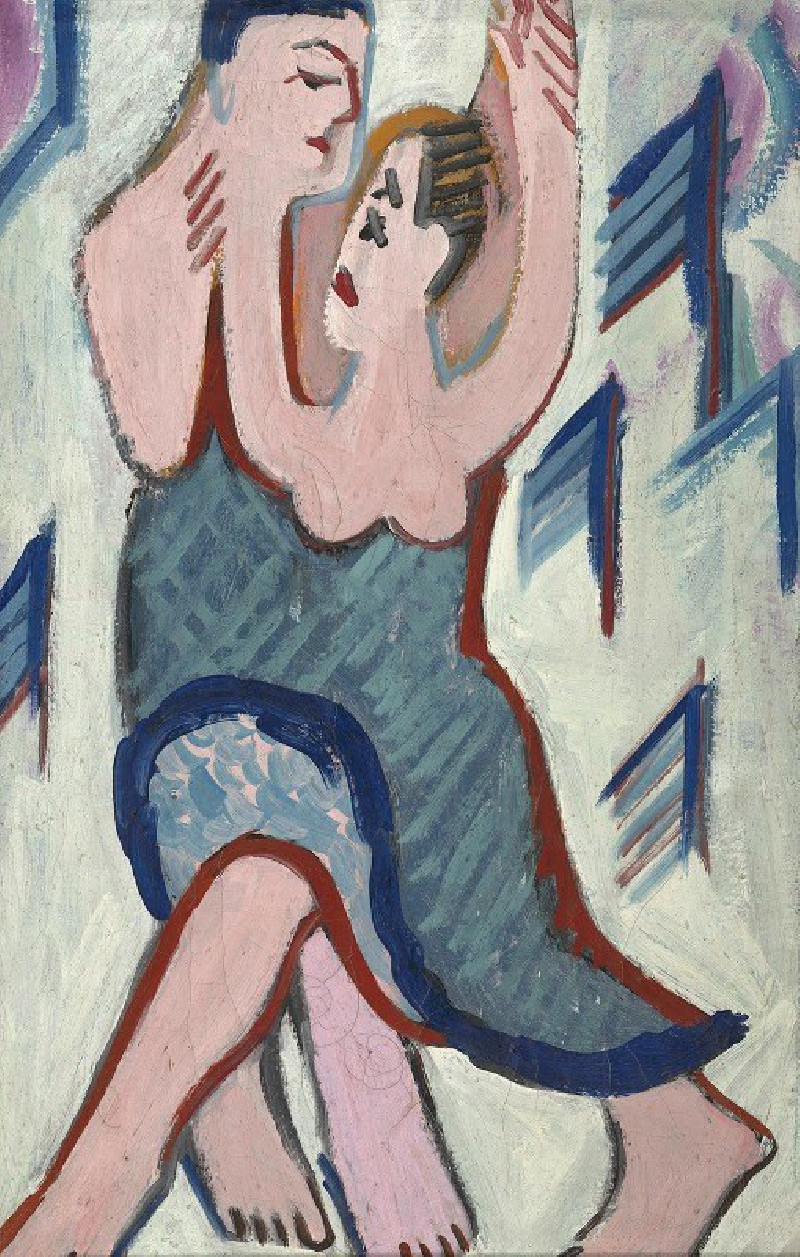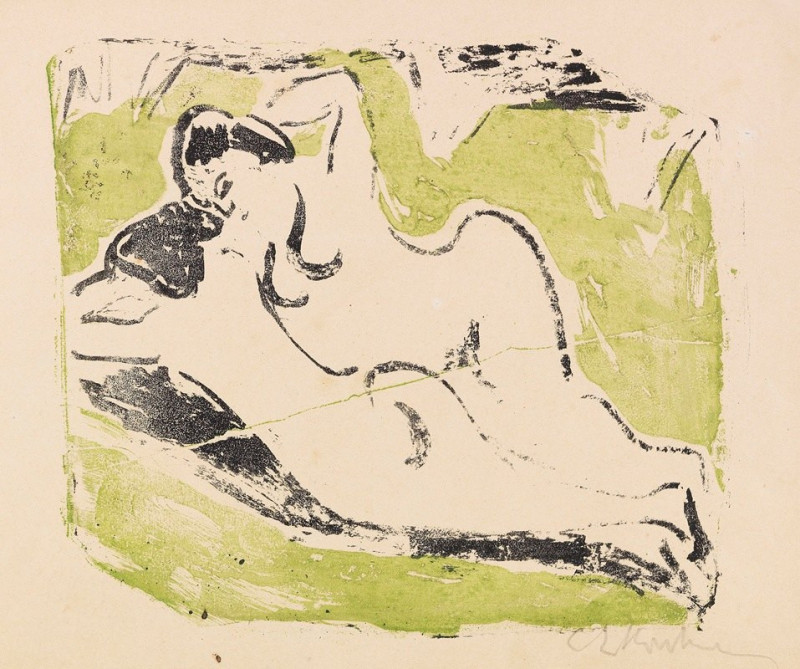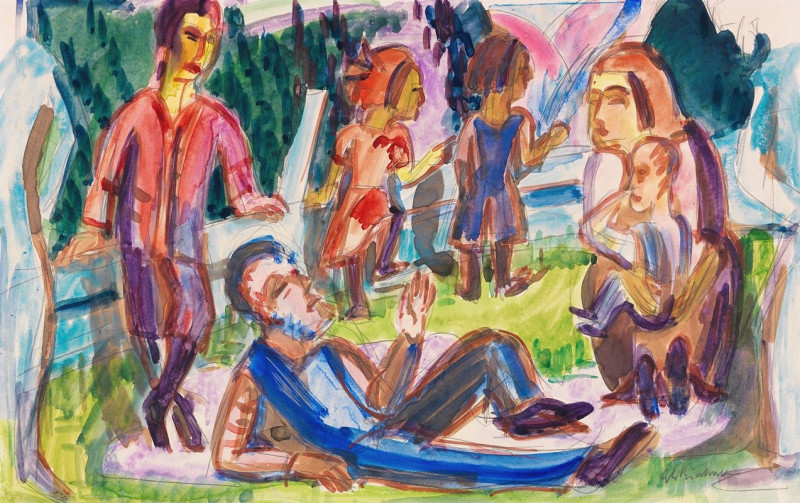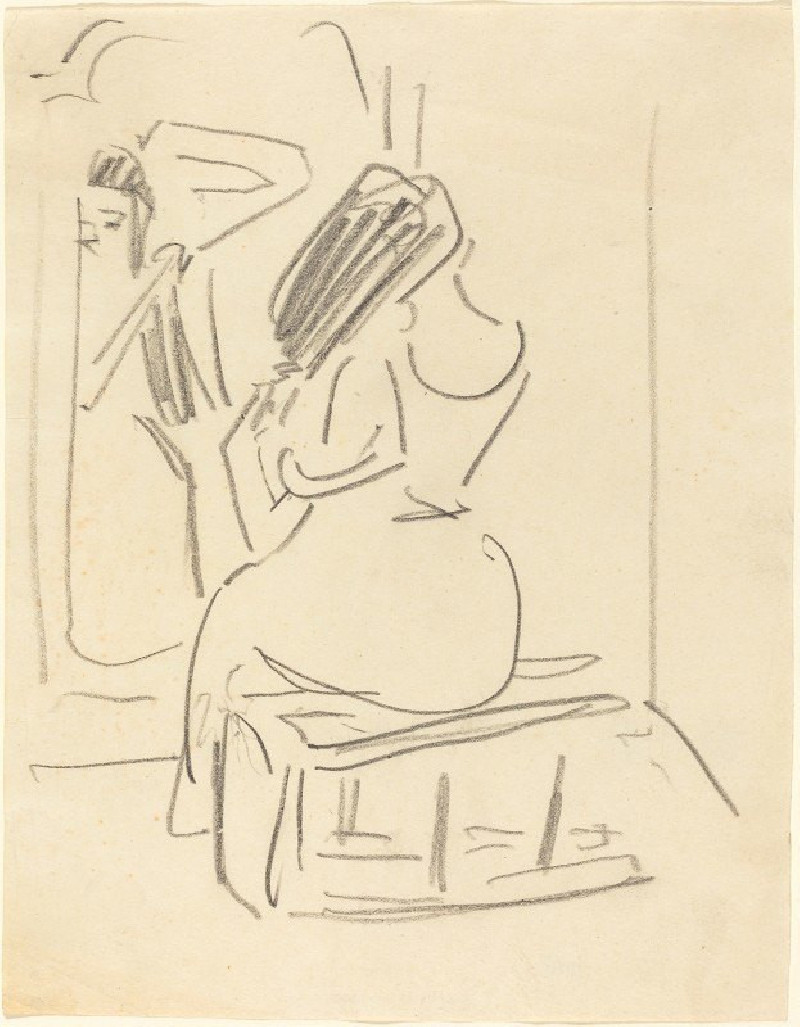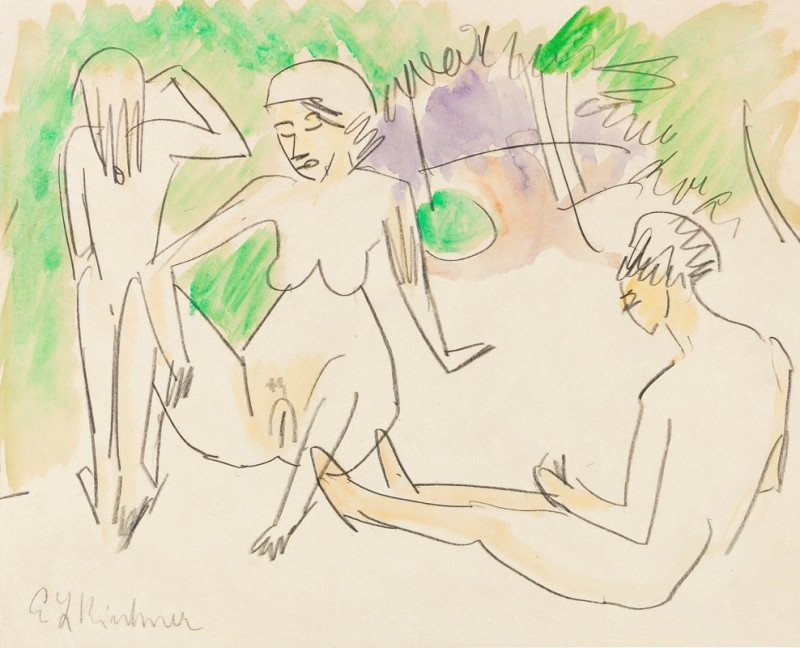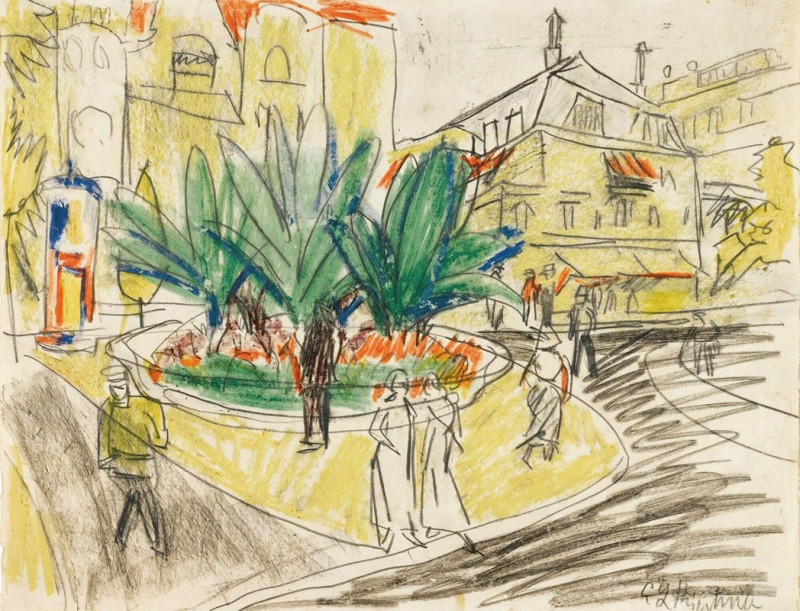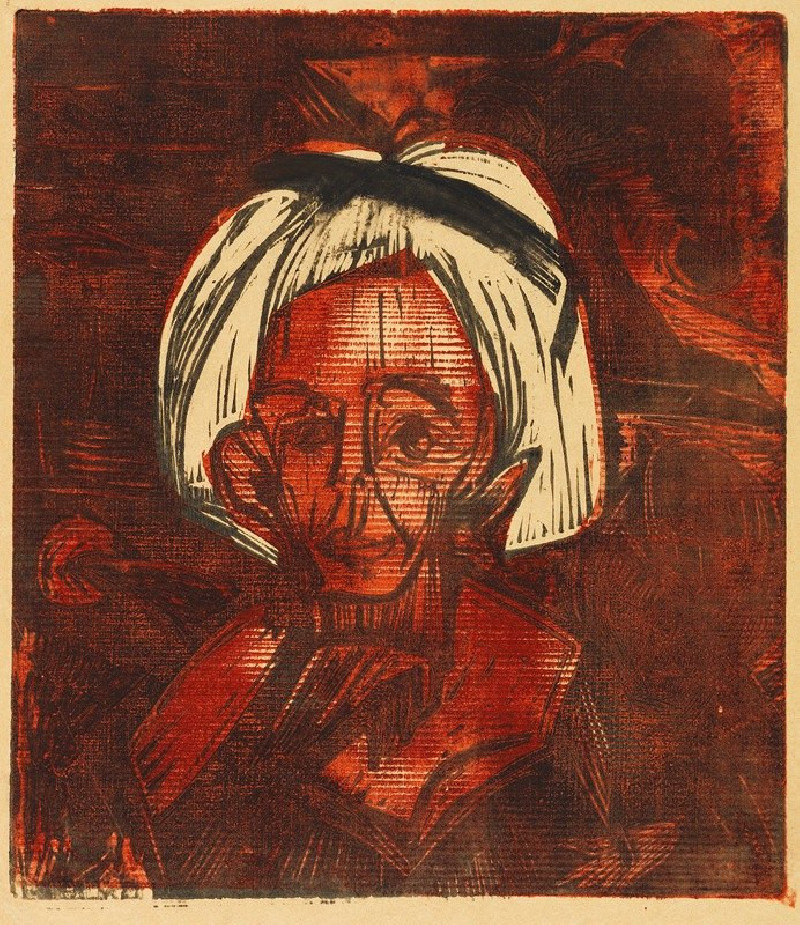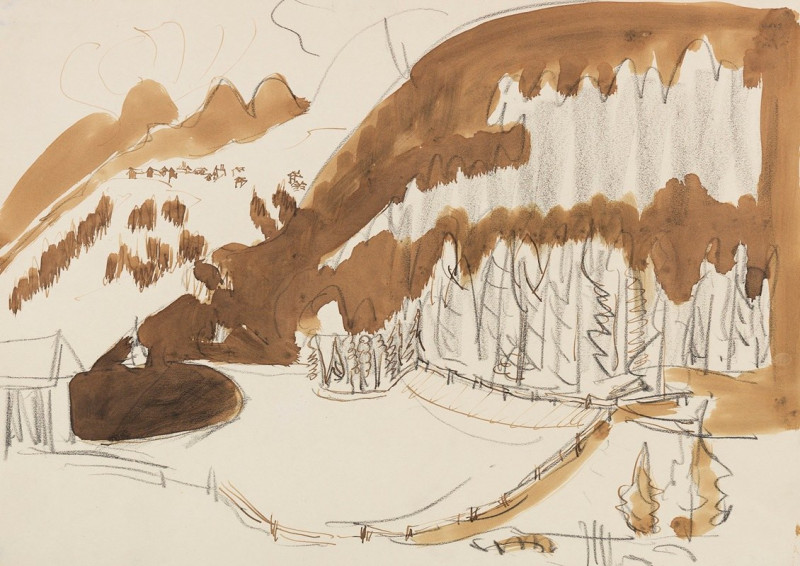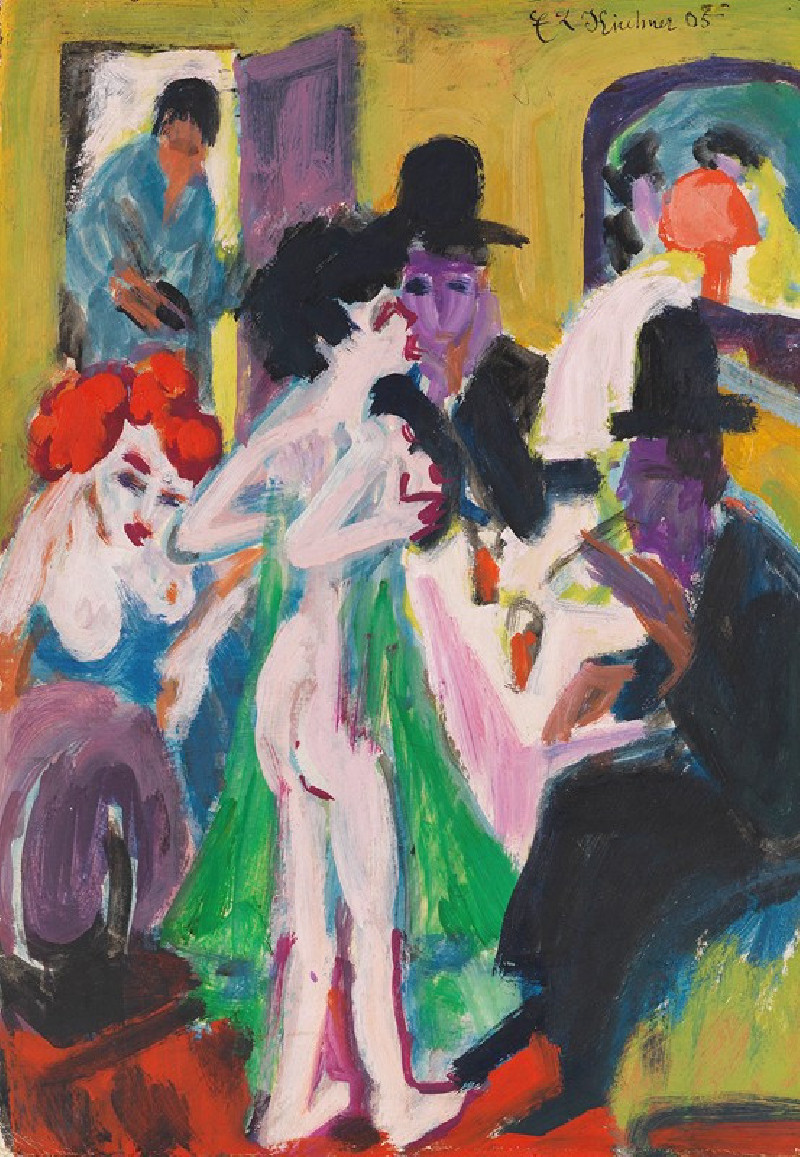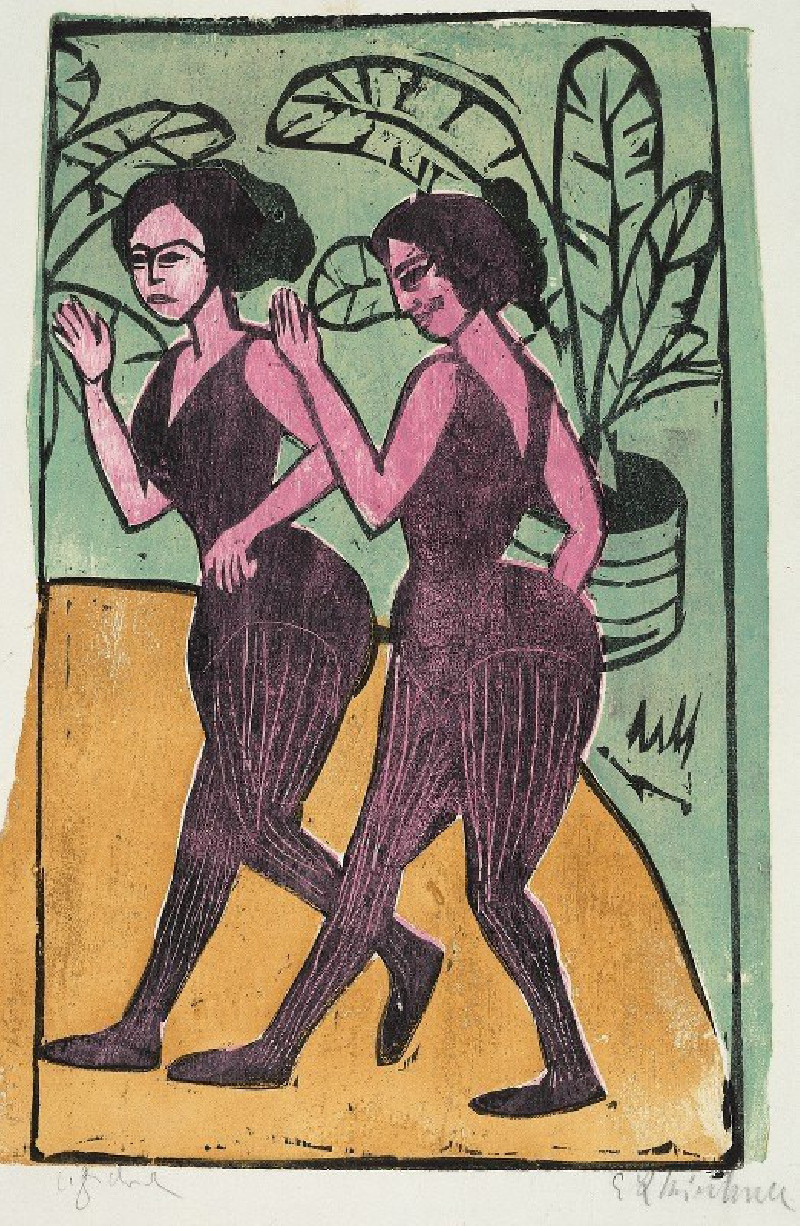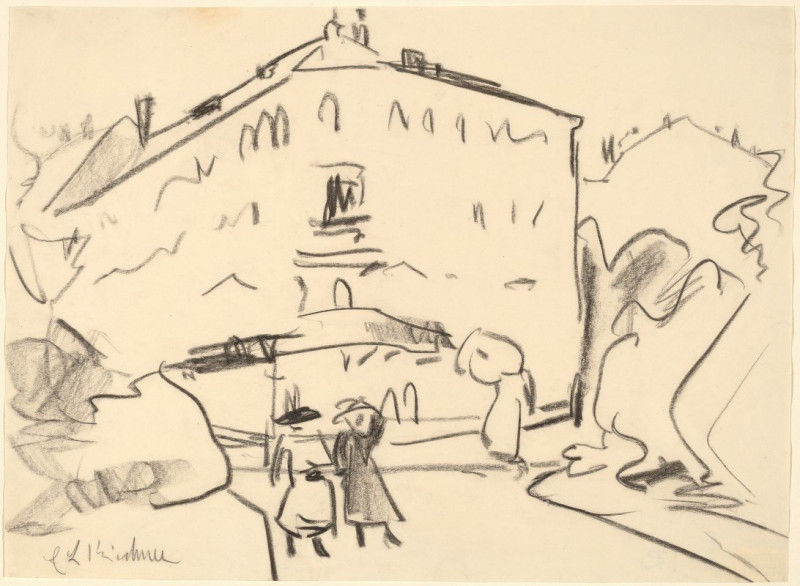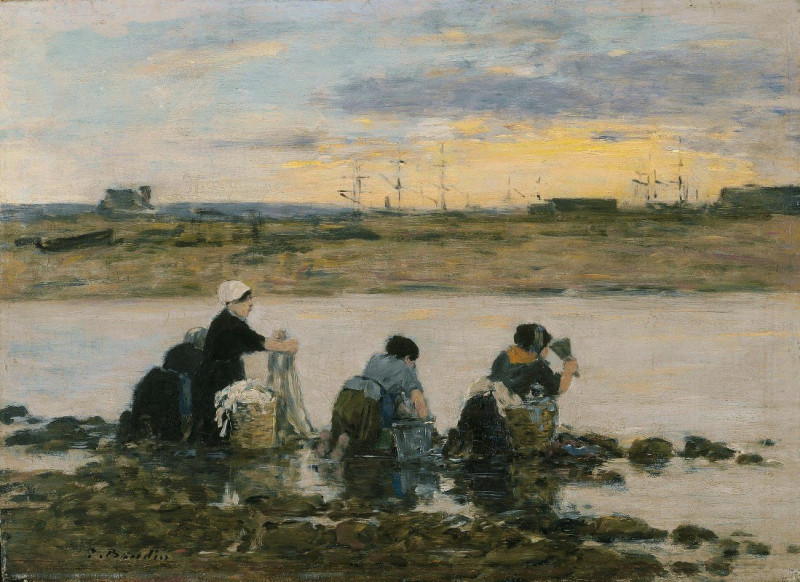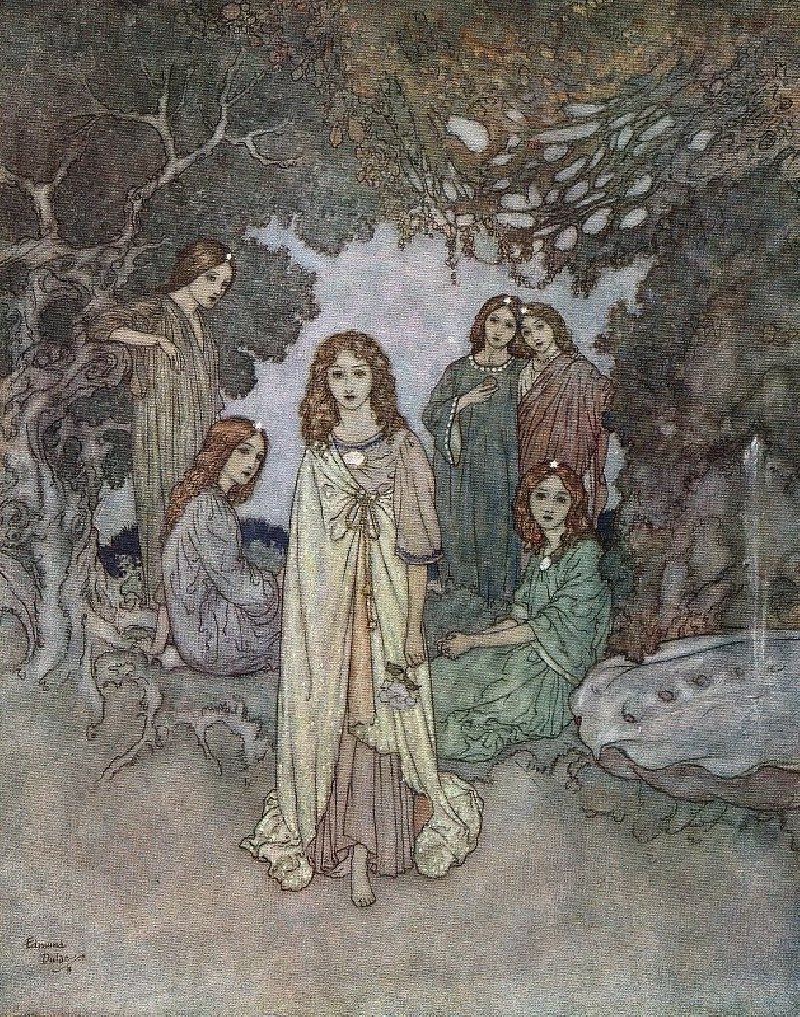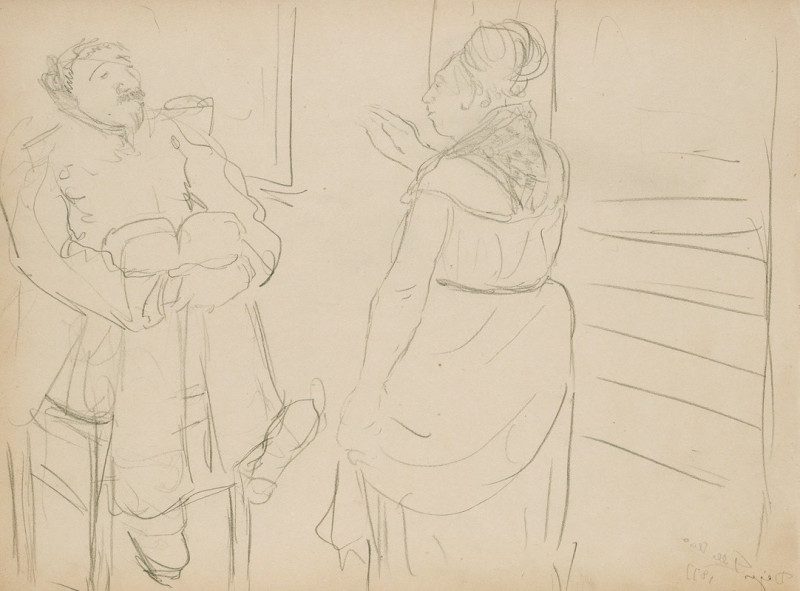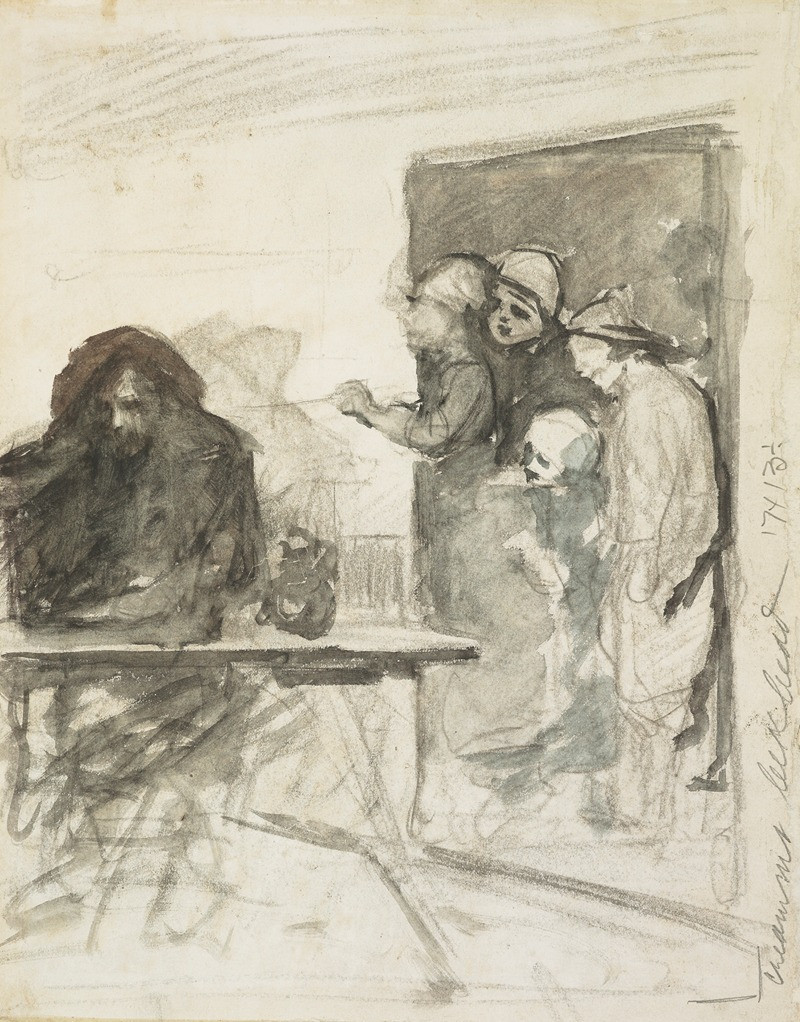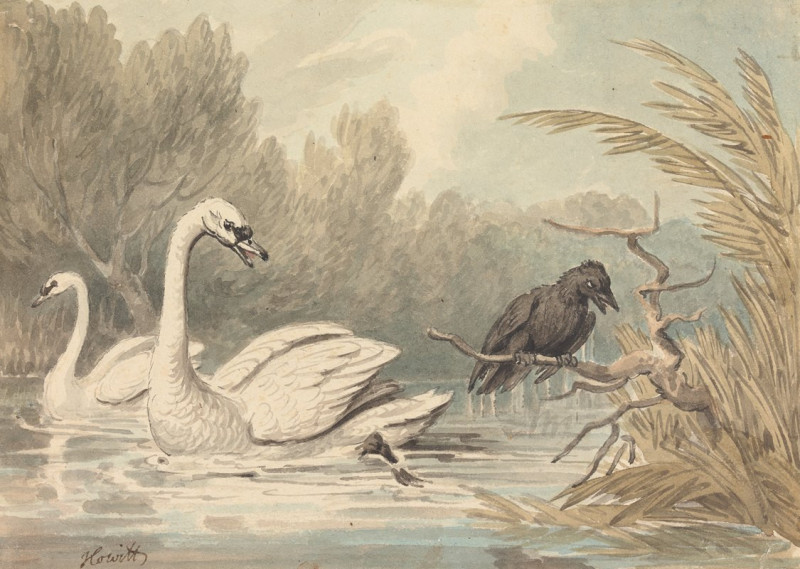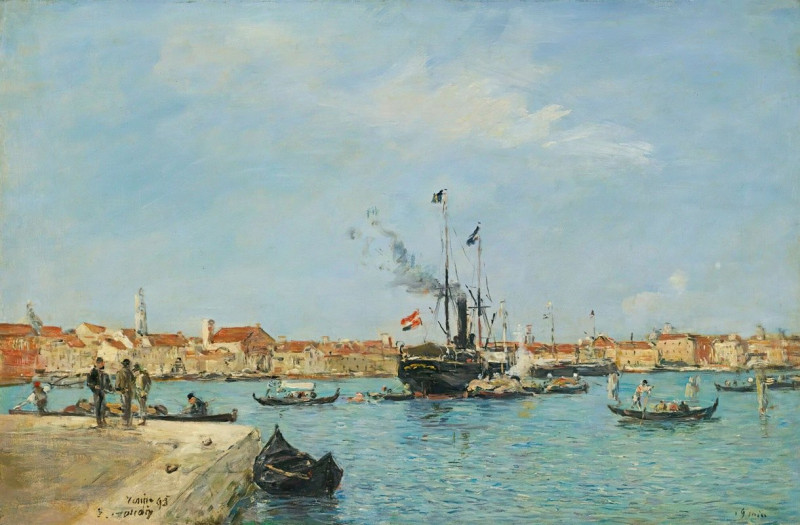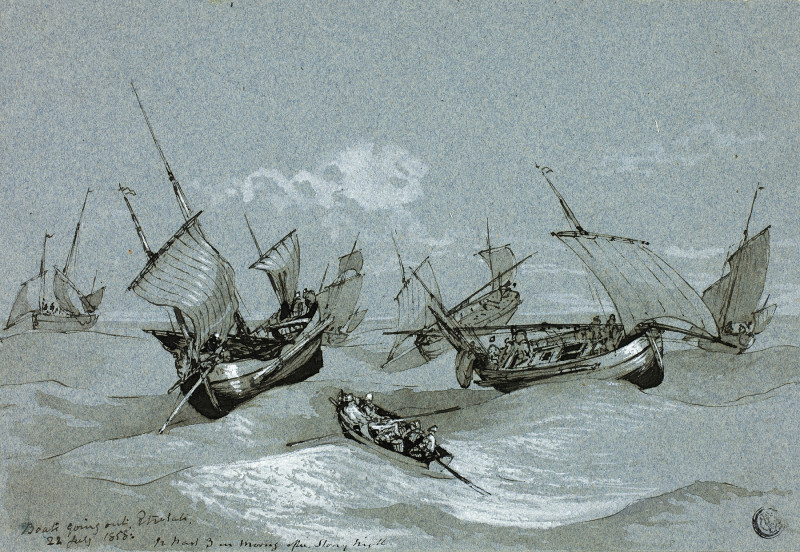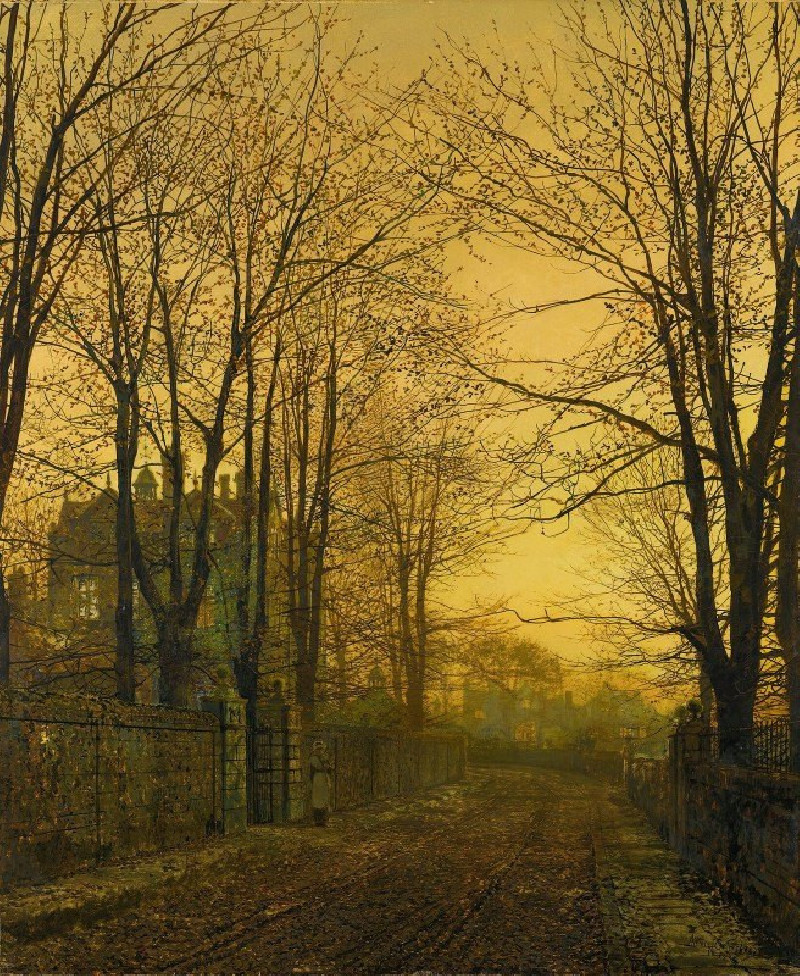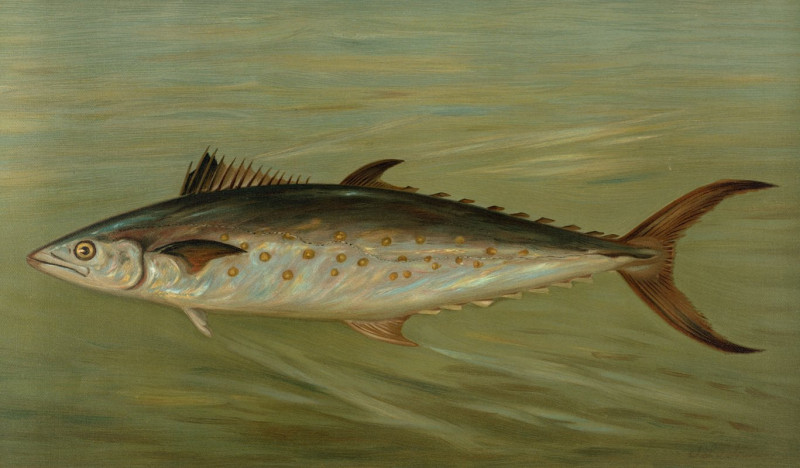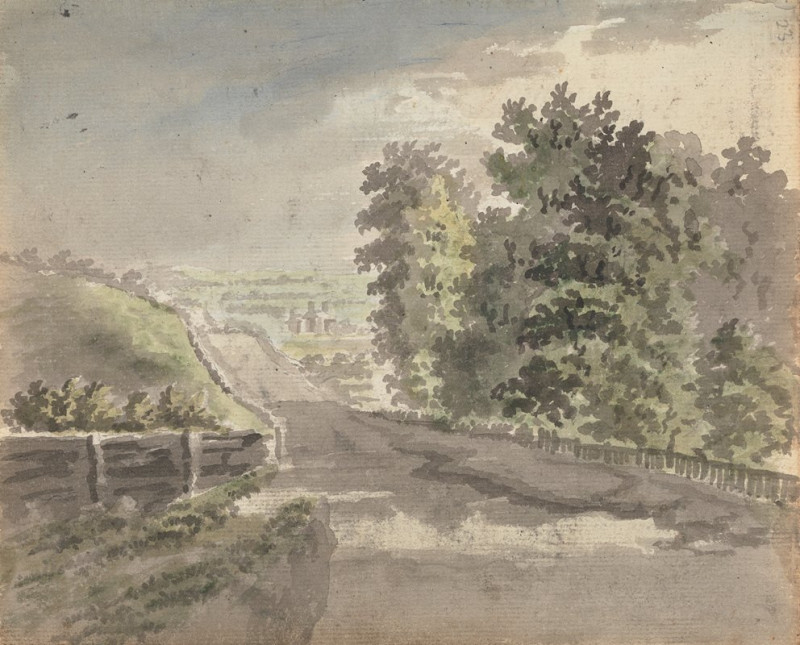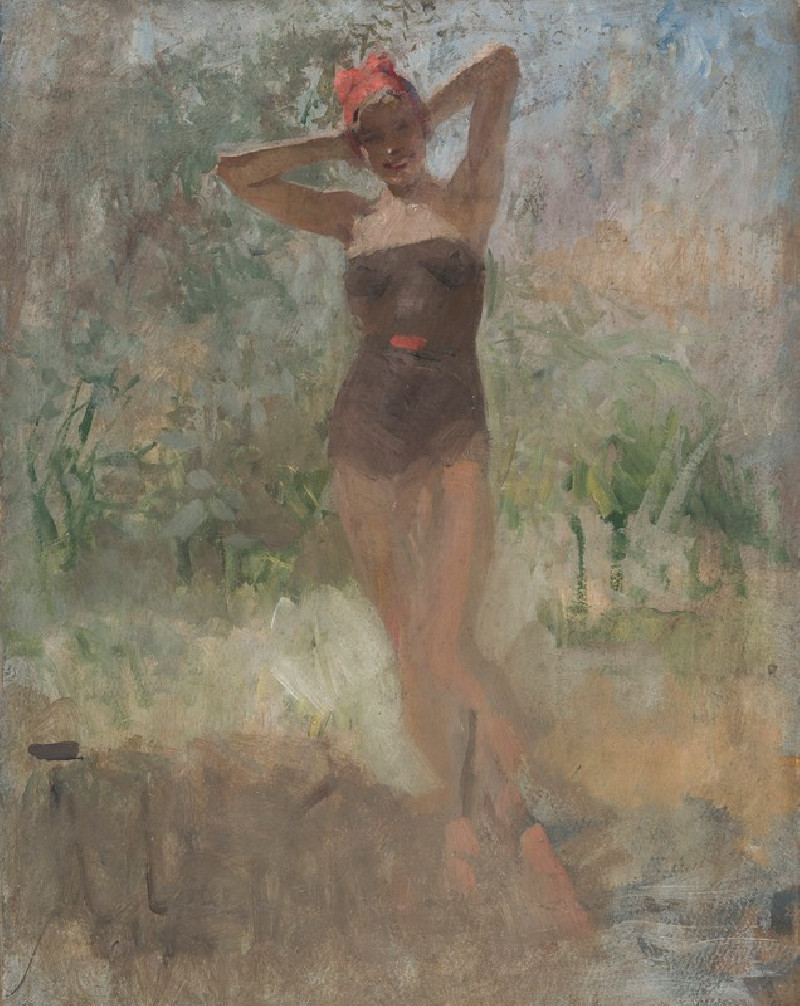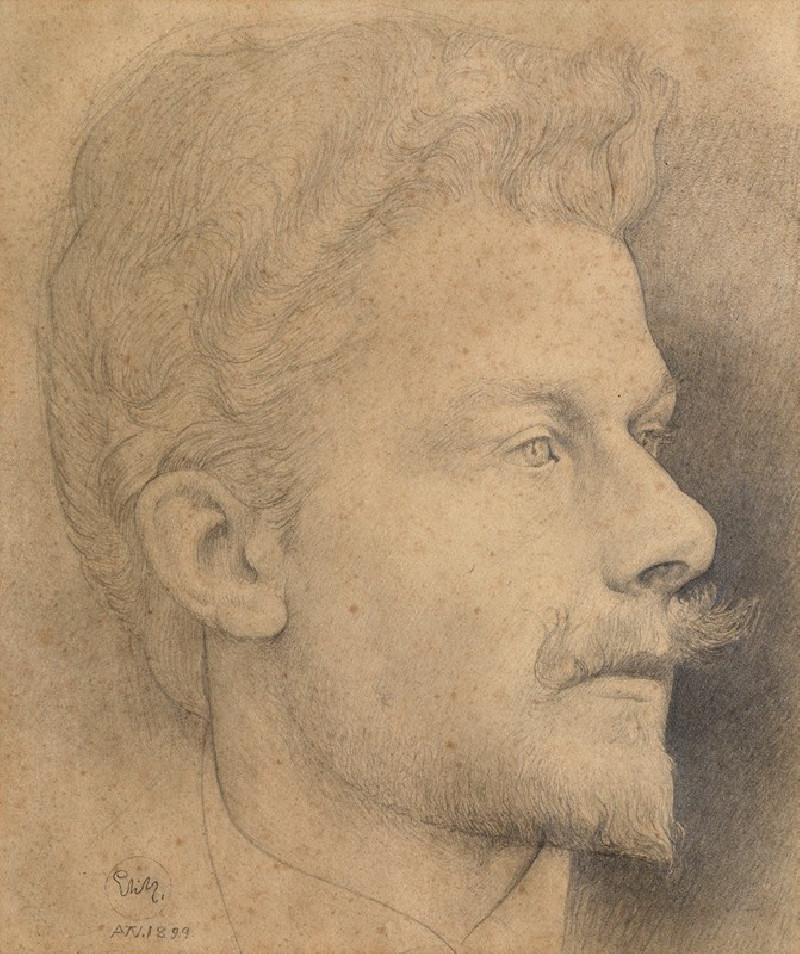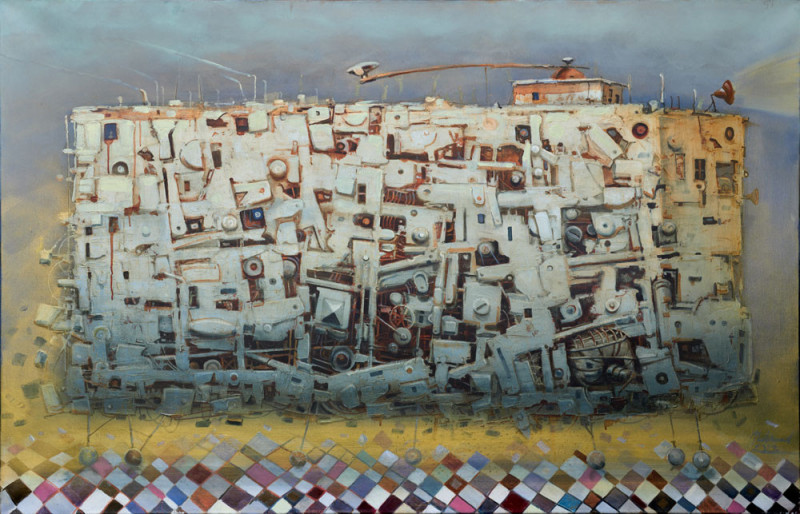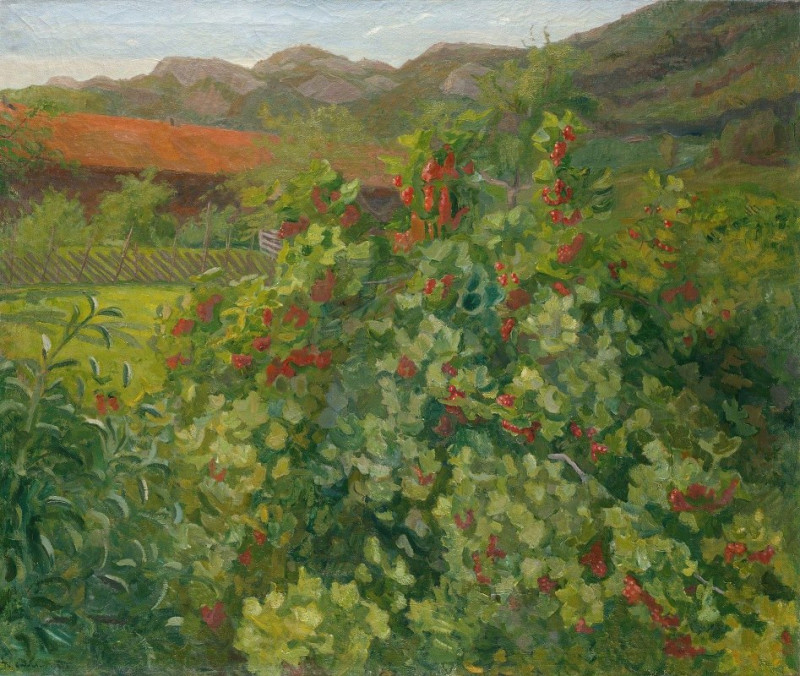Galgenberg In Jena (1915-16)
Technique: Giclée quality print
Recommended by our customers
More about this artwork
Ernst Ludwig Kirchner, a driving force behind the German Expressionist movement, presents a vivid, emotionally charged landscape in his painting "Galgenberg in Jena (1915-16)." This artwork encapsulates Kirchner’s distinctive style, marked by bold colors, angular forms, and dynamic compositions.At the heart of this painting is the depiction of a lush, rolling landscape, alive with swirling patterns of vibrant greens, blues, and radiant reds. The painting captures the essence of the Galgenberg hill in Jena, Germany—itself steeped in history and folklore. Kirchner's use of exaggerated, fiery autumnal colors invigorates the scene, possibly reflecting the tumultuous period during which it was created, amidst the upheavals of World War I.Dominating the foreground are strikingly rendered trees, their leaves aflame with shades of red and orange, suggesting the fiery palette of fall. The expressive brushstrokes imbue the scene with a sense of movement and immediacy. Small houses, nestled unobtrusively among the hills, convey a rustic simplicity, harmonizing with the natural environment. A lone figure, clad in bright yellow, appears deeply integrated into the scene, perhaps collecting fruits or simply engrossed in the serenity of the surroundings."Galgenberg in Jena" is more than a mere geographical portrayal; it is an emotional landscape, reflecting Kirchner’s intense reactions to the world around him. This painting invites viewers to explore not only the external beauty of Jena’s topography but also the internal landscape of the artist’s psyche during a pivotal moment in history.
Delivery
Returns
Ernst Ludwig Kirchner (1880–1938) was one of the most important German Expressionist painters. He was a co-founder of Die Brücke, a group of German expressionist artists formed in Dresden in 1905. Die Brücke and Kirchner took inspiration from Vincent Van Gogh and Edvard Munch, as well as African and Oceanic art. They used woodblock printing as a medium to showcase their signature style: flat, unrealistic images with vivid colors. The recurring themes in Kirchner's artworks included exotic cultures, faraway landscapes, self-portraits, dancers and Berlin street life. His paintings and prints effectively portrayed non-European cultures despite the fact that he never traveled outside of Europe.

